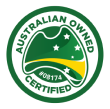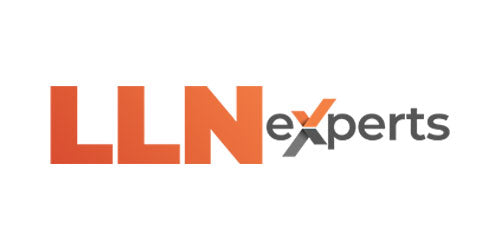
Superseded Training Products Policy
Policy: Superseded Training Products
1. Scope
This policy applies to all training products, including units of competency, that have been superseded within the quality training frameworks at both state and federal levels.
2. Superseded Training Product Classifications
Training products can be classified as follows when superseded:
(a) Superseded and Equivalent: The outcomes and skills assessed in the new product are identical to the superseded product.
(b) Superseded and Non-Equivalent: The outcomes and skills assessed in the new product differ from the superseded product.
(c) Deleted: The product is removed from the national register training.gov.au and should not be delivered to the new students from when it is removed or deleted..
3. Transition Period
Superseded and Equivalent products have a transition period, usually 12 months, as determined by regulatory bodies such as ASQA. This allows RTO management to transition existing learners to the new product.
Superseded and Non-Equivalent products may have a shorter or longer transition period depending on industry needs and regulatory decisions.
Once a product is deleted, it immediately becomes unavailable for new enrolments without any transition period. However, students typically receive an extended teach-out period to ensure ample time to complete their courses.
4. Resource Provision
(a) Develop and provide resources for the updated and equivalent units of competency within the transition period.
(b) Address queries regarding resource availability and unavailability to stakeholders in a responsive manner.
(c) Support RTOs in transitioning existing learners to the new product (at additional cost as this comes under consultancy services).
5. Responsibilities
RTOs: Are responsible for checking the national register training.gov.au for updates and changes to training products.
Learners: The client's Registered Training Organisation (RTO) should ensure that their trainer or training manager informs students about any modifications to the training program as a result of superseded products. It is crucial to maintain effective communication and keep students updated on changes to ensure a seamless learning experience.
Resource provider: During the transition period, we are committed to providing you with the latest and comparable products. Rest assured, we take full responsibility for delivering these resources to you as soon as possible within the transition period. We will keep you informed and updated if we require additional time due to unforeseen circumstances.
6. Costs involved in transitioning
This section outlines the associated costs for transitioning training products declared "Superseded" within the Quality Frameworks/Training Packages/Nationally Accredited Training (NAT).
(a) Superseded and Equivalent Products:
No additional costs:
Transitioning learners to equivalent products incurs no additional resource fees. These products typically possess comparable skills and outcomes (only slight variations) to the superseded training product.
Identical vs. Non-Identical Skills/Outcomes:
If the new product's assessed skills and outcomes are functionally identical to the superseded product, the resources provided will be complimentary.
If significant variations exist, we offer a discounted rate for the updated resources needed for a seamless transition.
Significant variations may encompass a wide range of possibilities, including, but not limited to.:
- the number of elements and performance criteria significantly differ from the original training product.
- the number of knowledge evidence criteria significantly differs from the original training product.
- the number of performance evidence criteria significantly differs from the original training product.
- Inclusion of foundational skills in the training product
- Changes to assessment conditions, such as simulated workplace environment, changed into workplace-based etc.
(b) Superseded and Non-Equivalent Products:
Discounted Rates: To facilitate the necessary revisions in training and assessment materials, we are offering discounted rates on new resources for non-equivalent products when purchased from us.
(c) Cost Calculations:
Discounts on non-equivalent resources will be determined based on:
- The extent of changes needed in training and assessment materials.
- The complexity of the new product compared to the superseded version.
- The volume of resources required for transition.
7. Frequency of Training and Assessment Resource Updates
We actively collect feedback from various stakeholders, including:
- Industry experts
- Registered Training Organizations (RTOs)
- Regulatory bodies
- Other relevant stakeholders
This feedback is categorised into two priority levels:
Highest Order to Complete: Resources requiring immediate development or update due to critical issues impacting their effectiveness.
Can be Completed but Wait: Resources considered valuable but non-critical, warranting development or update on a less urgent basis.
Resource Updates Triggered by Feedback:
RTOs will receive new resources only when triggered by feedback falling into one of the following categories:
Critical Errors or Omissions: Identified deficiencies in existing resources requiring immediate rectification to ensure accuracy and compliance.
Significant Industry Changes: Updates reflecting substantial shifts in industry practices, regulations, or technology to maintain currency and relevance.
Regulatory Changes: Mandated modifications due to alterations in national training packages, assessment requirements, or other regulatory stipulations.
High-Priority Stakeholder Feedback: Recurring or widespread concerns from industry, RTOs, or regulatory bodies demanding immediate attention.
Additional Considerations:
Regular internal evaluations may also trigger resource updates for identified issues not captured by external feedback.
We maintain transparency by communicating planned resource updates and their rationale to RTOs through various channels.
RTOs can inquire about the status of specific resources or suggest potential updates by contacting our designated support channels.
8. Frequency of Training and Assessment Resource Updates
This policy will be reviewed annually or following significant changes to the ASQF or regulatory requirements.
Additional Notes:
This policy is a general overview and may not cover all specific scenarios.
For detailed information on specific superseded products and transition periods, refer to the national register training.gov.au and regulatory guidelines.
Proud Member of

































